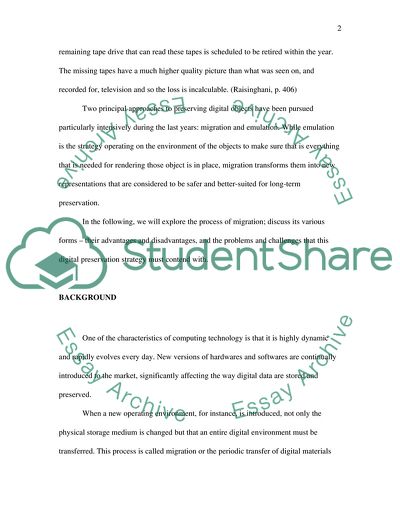Cite this document
(Digital Preservation: The Migration Method Research Paper, n.d.)
Digital Preservation: The Migration Method Research Paper. Retrieved from https://studentshare.org/technology/1724634-digital-preservation
Digital Preservation: The Migration Method Research Paper. Retrieved from https://studentshare.org/technology/1724634-digital-preservation
(Digital Preservation: The Migration Method Research Paper)
Digital Preservation: The Migration Method Research Paper. https://studentshare.org/technology/1724634-digital-preservation.
Digital Preservation: The Migration Method Research Paper. https://studentshare.org/technology/1724634-digital-preservation.
“Digital Preservation: The Migration Method Research Paper”, n.d. https://studentshare.org/technology/1724634-digital-preservation.


